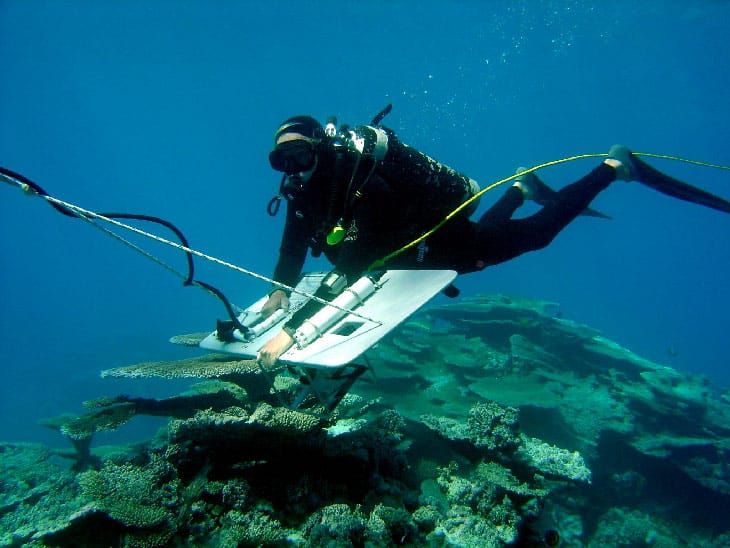Populations of green sea turtles (Chelonia mydas) in and around Hawaii and American Pacific island territories have increased, sometimes by an average of 8 percent each year since scuba diving researchers began counting them in 2002, according to a study published in the PLOS One journal.
The researchers surveyed 53 islands, atolls, and coral reefs in the U.S. Pacific from 2002 to 2015, counting more than 3,400 sea turtles, with 90.1 percent being green sea turtles. Sea turtle counts around Hawaii experienced an 8 percent annual increase, while numbers around American Samoa and the Mariana Islands rose by an average of 4 percent per year. Green sea turtle populations around Hawaii and U.S. Pacific islands are up markedly. Study coauthor Rusty Brainard, an oceanographer based in Honolulu, told Science News: “From a conservationist’s point of view, that’s pretty phenomenal.” Brainard supervises the U.S. National Oceanic and Atmospheric Administration’s coral reef ecosystem program. The study also counted hawksbill turtles (Eretmochelys imbricata) and found their numbers still struggling compared to other species. Ecologist and study coauthor Sarah Becker said, “We didn’t spot enough hawksbills to analyze their population trends over time. It’s a sign that their population is really struggling.” Becker coauthored the paper with Brainard and Kyle Van Houtan, a conservation ecologist. Researchers were towed behind slow-moving boats, one hour at a time, over coral reefs to observe turtles in their natural habitat. Brainard described it as “a spectacular way to see the reef system,” noting, “They’re just so graceful. We’d see them gliding along or sleeping in the caves and overhangs of the reefs.” During surveys, researchers also observed sunken ships leaching iron and large fishing nets snagged on reefs, which broke corals and entangled marine organisms. The researchers attribute the Endangered Species Act with helping the reptiles recover, at least in the Hawaiian islands and other U.S. Pacific territories. Green sea turtles are listed as endangered, while hawksbill turtles are critically endangered. Sea turtles face risks from harvesting for food and shells, especially in countries like China, as well as fisheries bycatch, marine plastics, pollution, habitat loss, and degradation. Their coral reef feeding grounds are also threatened by environmental and anthropogenic stressors. The complete paper, “Densities and drivers of sea turtle populations across Pacific coral reef ecosystems,” is available on the PLOS One Journal website.


